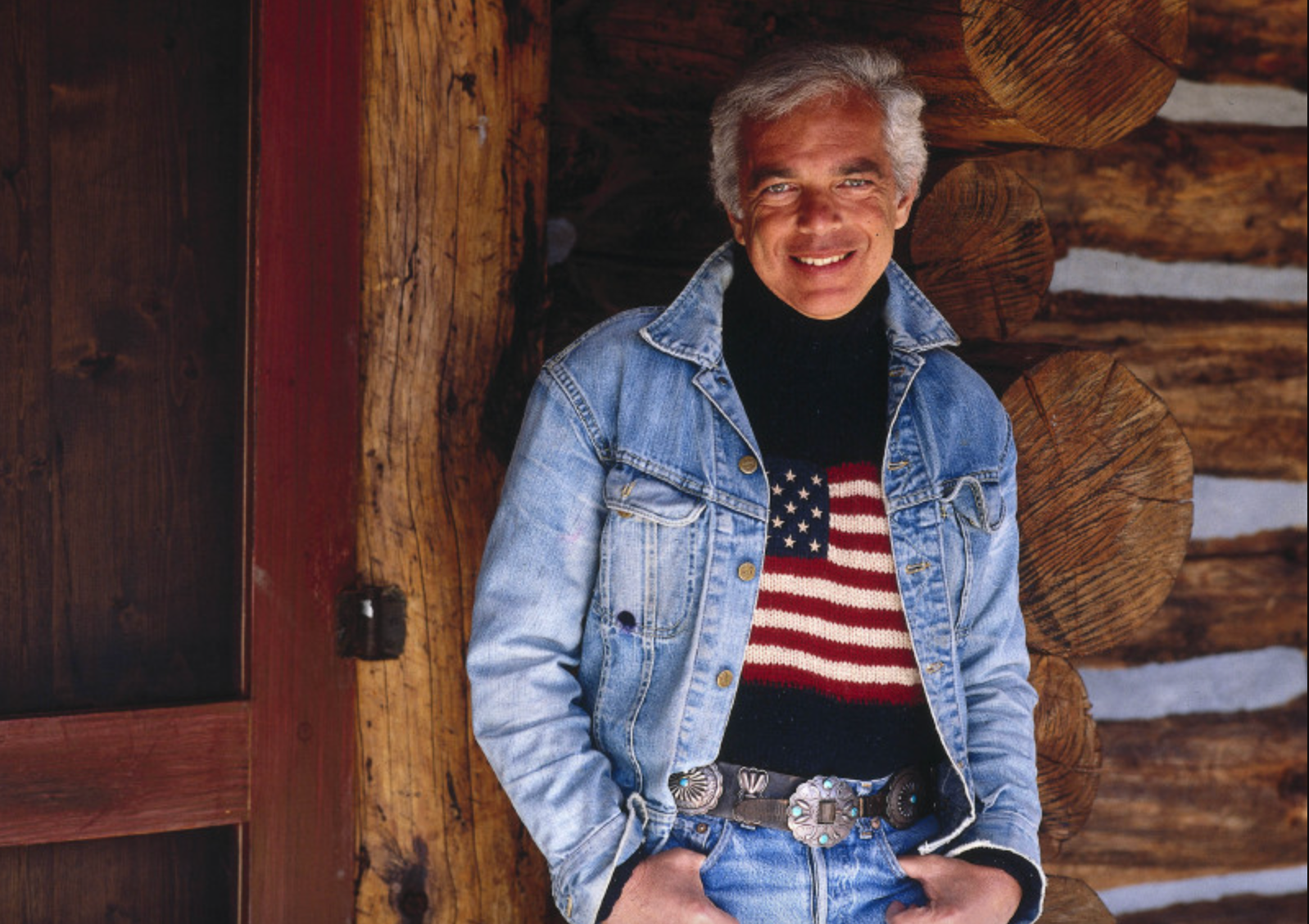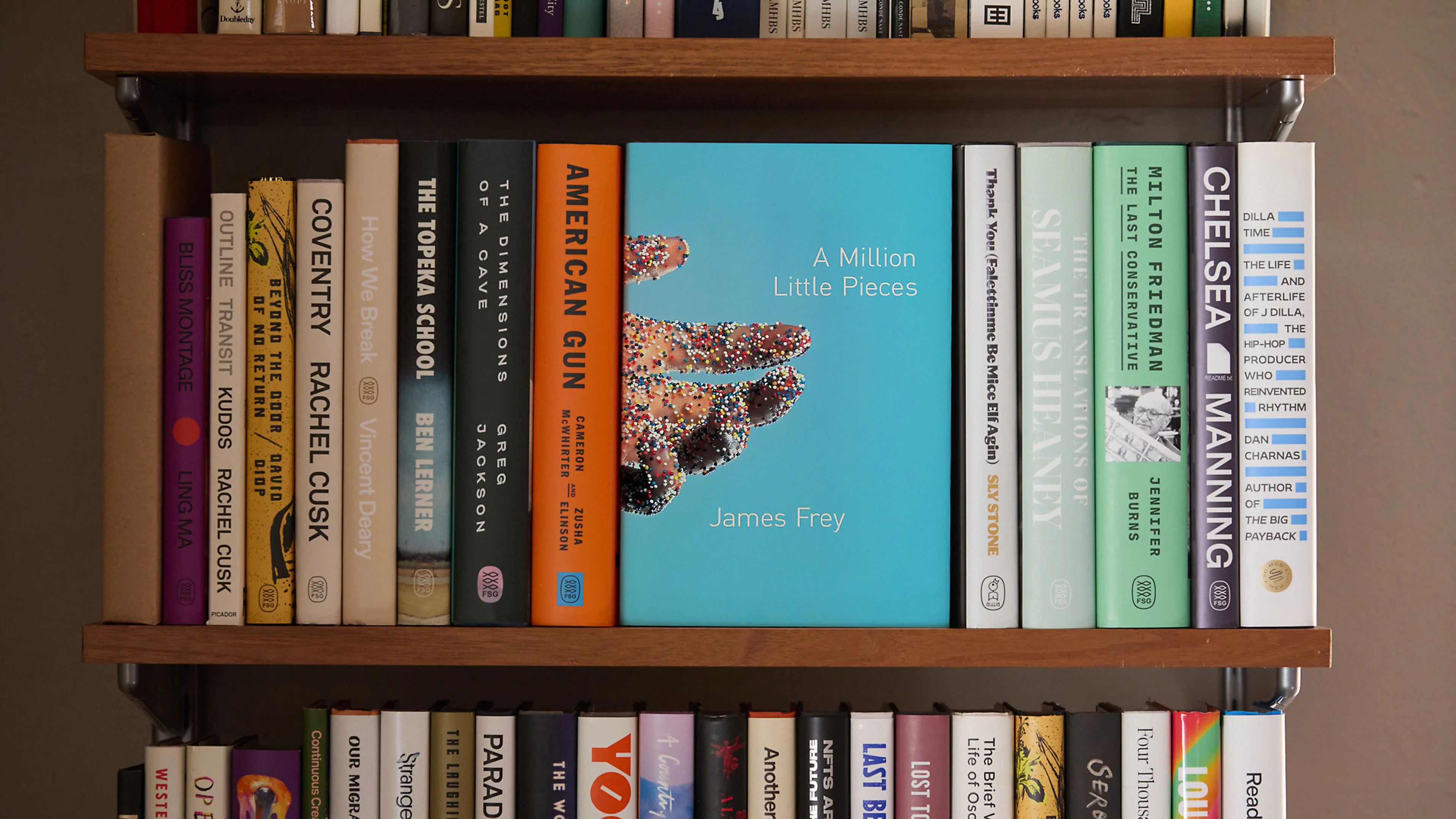Flying Car, Cool!
World’s first mass-produced flying car unveiled after more than 500 successful flights
Created by Slovakia-based developer Klein Vision, the AirCar is set to be the world’s first mass-produced flying car after completing more than 170 flight hours
By REANNA SMITH

A Slovakia-based developer has unveiled what is set to be the world’s first mass-produced flying car in a groundbreaking moment for the aviation industry.
Klein Vision showed off its production prototype of the AirCar, the world’s first certified flying car, during the 2025 Living Legends of Aviation Gala Dinner in Beverly Hills last month. Distinguished guests including Prince Harry and legendary astronaut Buzz Aldrin got a sneak peek of the flying car as they took part in a ceremony honoring pilot firefighters for their heroic efforts in battling the recent Los Angeles wildfires.
Like-olution
Humans Evolved to Like ‘Likes’
The thumbs-up icon became the most used feature on social media by tapping into our deepest psychological instincts.
By Martin Reeves and Bob Goodson

Statistically speaking, you’ve probably already pressed a like button several times today. If you’re under 20 years old, even more. Perhaps you recently posted on Instagram or Facebook and have been eagerly checking as the like count rises on your phone—each new like accompanied by a buzz in your pocket and a flutter in your heart. But why do we like the like button so much that it almost immediately became the most used feature on social media—and by now is at the fingertips of the majority of humans on the planet?
In 2018, neuroscientist Lauren Sherman and colleagues set out to study that question. They asked 58 young people, aged 13 to 21, to go through their Instagram accounts and select several photos they had posted recently.
Mossbrae Falls
California’s most beautiful waterfall isn’t even open to the public

Mossbrae Falls is breathtaking, but inaccessible.
Less than half a mile from the city limits of Dunsmuir, Calif., a little railroad town in far Northern California, there is a waterfall so beautiful that people say it takes their breath away.
Mossbrae Falls, which is fed from glaciers on Mount Shasta’s majestic slopes, tumbles across mossy cliffs in great curtains of water, and then down into the Sacramento River.
A century ago, the waterfall was a glorious tourist attraction. Southern Pacific Railroad ran special trains to it, where people could get out and take in the view and drink from the springs.
F†ck Digits
The Analog Life: 50 Ways to Unplug and Feel Human Again
There’s life beyond the infinite scroll. We put together a toolkit of habits, routines and products to help you live more intentionally.

In 2006, a UX designer named Aza Raskin invented a concept called “infinite scroll.” The feature provided an alternative to internet pagination — anytime users reached the end of a feed, timeline or results page, they could just flick the screen down for more. And like magic, more always arrived.
Raskin knew exactly what he’d built: “If you don’t give your brain time to catch up with your impulses, you just keep scrolling,” he explained in a BBC interview. “It’s as if [you’re] taking behavioral cocaine…sprinkling it all over your interface. That’s the thing that keeps you coming back and back and back.”
Did we know what we were walking into? Say you took a time machine back to the early 2010s. The iPad, the first commercially profitable tablet, had just arrived. Smartphones were adding a litany of features, steadily transforming from a situation-specific tool into an all-day ecosystem. Most of us felt lucky to have these things — and the original versions certainly weren’t cheap.
Project Blue Pope
Will the next Pope FINALLY reveal the Vatican’s UFO secrets? Insider says ‘truth is coming’… with help of US president
Steve Bassett reveals how the Vatican’s widely claimed UFO secrets might come to light

THE Vatican should finally reveal the truth about alleged links between UFOs and the church, a top UFO lobbyist has urged.
Steve Bassett, executive director of the Paradigm Research Group, said the “truth is coming” – but it might not be the next Pope who releases any bombshell files.
Bassett says he believes it is clear the Catholic Church knows about UFOs – and likely has documented evidence hidden in their archives.
He insists “extraordinary” information sits locked away in the Vatican Library – collected from millions of confessions reporting strange sightings or close encounters.
It comes after Pentagon whistleblower David Grusch claimed Italy had uncovered a UFO during Mussolini’s reign in 1933.
Following the death of Pope Francis, Bassett revealed whether the next Cardinal could finally fling open the doors to the Vatican’s UFO files.
Art Dick
Forgers and fraudsters trusted him for decades — but he was an undercover FBI art detective

Winning the trust of convicted burglar Jerry Christy was the kind of challenge undercover FBI investigator Ronnie Walker had spent years preparing for.
A founding member of the bureau’s specialist Art Crime Team, the Oregon-based agent was well-versed in art history — and trained to pose as a would-be buyer, authenticator or dealer of stolen works. Christy, meanwhile, was being covertly investigated in 2007 over the theft of several artworks, including a 17th-century etching by Dutch master Rembrandt van Rijn.
“That etching that was my entrée into his ring,” recalled Walker, who recently retired from the FBI after almost 29 years, allowing him to speak more openly about his career exposing fraudsters, forgers and traffickers in elaborate sting operations.
“At the time, I was really hyper-focused on learning about fine art prints,” added the former agent, who met Christy through a confidential source in 2007. “And I made him believe I was the kind of person who could sell a Rembrandt.”
But things got trickier for Walker, he said, when Christy’s expert accomplice got in touch.
Moonprank
Ridiculous History: The Great Moon Hoax of August 1835
By: Bryan Young

On Aug. 25, 1835, The New York Sun ran the first in a series of newspaper articles describing scientific findings from the moon. Known as “The Great Moon Hoax,” the articles were supposed to have been reprinted from the Edinburgh Journal of Science and written by Dr. Andrew Grant, a colleague of the famous astronomer Sir John Herschel. The series featured some of the most popular articles the New York newspaper had ever printed at the time, and people clamored to read about the breaking scientific news of the day.
The articles describe Herschel, who had traveled to Capetown, South Africa, in January 1834 to set up an observatory with a powerful new telescope. Grant’s writings suggested that while in South Africa, Herschel had found evidence of life on the moon, including unicorns, two-legged beavers and humanoids that “average four feet in height, were covered, except on the face, with short and glossy copper-colored hair, and had wings composed of a thin membrane, without hair, lying snugly on their backs.”
The articles also described the moon’s geography as having massive craters, amethyst crystals, flowing rivers and lush vegetation.
SuspiciousGPT
Is Anything Real Anymore? AI Making Americans Suspicious Of Everything Online

In a nutshell
- Americans believe only 41% of online content is accurate and created by humans, with three-quarters reporting their trust in the internet is at an all-time low.
- When tested, only 30% of people could correctly identify AI-written content, showing how difficult it’s become to distinguish between human and artificial writing.
- 82% of Americans want businesses to be legally required to disclose when they use AI in marketing, customer service, or content creation.
Umm, duuhhh… devices….
When did people stop dancing at the club?
DJs, club owners, and patrons alike say there’s way too much standing around.

Clubs are, first and foremost, for dancing. One could theoretically do other things there — drink, meet strangers, conduct important and possibly illicit business deals, anything really — but likely everything but dancing could probably be done more efficiently somewhere else. At the same time, while no one’s stopping anyone from dancing in other places that are more accessible and less expensive to shake and shimmy, from the gym to the bar to your own home, there isn’t a better place to dance to loud music than a club.
But what happens if the dancing stops?
According to DJs, nightclub owners, frequent club-goers, and a number of front–facing camera complaints over social media, a growing frustration at the dancery is a growing number of people not dancing. These nondancers are threatening to turn the club — a place where jumpin’ jumpin’, dancin’ dancin’, and maybe even love have all been promised — into one of those other places where no one dances.
On the surface, the divide seems split between movers and non-shakers (with a little sprinkle of generational warfare), but it speaks to the very tenets of nightlife. The puzzling act of not dancing at a place designated for dancing is one of those mysteries that raises questions, if not calls for a full-blown investigation. Why did people stop dancing? What are they doing at the club if they’re not dancing? Who’s sitting out and who can we blame? Who’s complaining?
Isle Royale
Escape the crowds at the lower 48’s most remote national park
Lake Superior’s Isle Royale, an archipelago of 400 islands, is one of the least visited national parks. Here’s why you should see this little known island wilderness.
By Stephen Starr
At a time when record crowds are seeing visitors to some U.S. national parks asked to pre-book access, Isle Royale National Park, an archipelago of around 400 islands on western Lake Superior, is the very definition of off the beaten track.
Its main island is about 50 miles long and nine miles wide—19 times the size of Manhattan—and sees less than one percent of the average number of visitors to Yosemite National Park when it opens to the public on around April 15 every year.
As the least-visited national park in the continental U.S., Isle Royale National Park is only reachable by ferry, private boat or seaplane from mainland Michigan and Minnesota.
It’s a place where the only vehicles are canoes and kayaks, and moose, wolves, beavers and smaller animals are the sole year-round residents. For many, its attraction—centered on its 36 campgrounds and 165 miles of back country trails—lies in the fact that it’s one of the few national parks with no instant Instagram gratification; cell phone coverage is patchy at best.
Pax Lauren
The Meaning of Ralph Lauren Nationalism

If you follow a certain kind of account on Twitter (I refuse to call it X), you’ve likely seen the posts. An image of a particular type of model—blond, blessed with prominent cheekbones and expensively tousled hair—rides a horse or sails a boat or plays croquet in warm golden light. Befitting the rustic settings in which they’re worn, the clothes are generously cut in muted colors. There’s a lot of tweed, tartan, and perfectly faded denim.
The caption is “Ralph Lauren Nationalism.” Presented without further comment in most cases, the posts belong to a genre that laments the world we have ostensibly lost. Remember an America, they imply, when this fantasia on WASP themes could be found in every glossy magazine and shopping mall in the country. Even if Ralph Lauren’s world was never exactly real, it expressed an ideal of wealth, tradition, and beauty that’s been replaced by gender non-conformists wearing hoodies and yoga pants.
CreepyGPT
Business Insider co-founder roasted over creepy blog post about AI workers
If a boss posted openly about swiping right on a human employee’s dating profile, that would constitute sexual harassment

Henry Blodget, a famed-then-disgraced Wall Street investor who went on to co-found the news site Business Insider, has a brand new venture. It’s off to a creepy start: He immediately hit on his artificial intelligence-generated first “employee.”
In February, Blodget fired up a Substack newsletter called Regenerator. He’s the CEO, the editor-in-chief and currently the lone employee, promising the outlet will “analyze the most important questions in innovation — tech, business, markets, policy, science, culture, and ideas.” But in a Monday post, things took a turn for the extremely weird — to the extent that Blodget has since made several edits to its most eyebrow-raising passages, and turned off the post’s comments. Still, a few people got in their roasts, with one commenter writing, “The best time to delete this post was immediately after posting it. The second best time is now.”
Madame X…?
How John Singer Sargent’s ‘Madame X’ Turned Paris High Society Upside Down
John Singer Sargent’s most iconic portrait ‘Madame X’ is the star of the Metropolitan Museum of Art’s forthcoming exhibition ‘Sargent and Paris.’
by Katie White

She was the sensation of Paris—known for her dramatic patrician looks, a Roman nose, and a famously cinched waist, as well as her numerous extramarital affairs. But the biggest scandal of American-born socialite Virginie Amélie Avegno Gautreau’s life happened not in the boudoir but the salon—when, in 1884, celebrated portrait painter John Singer Sargent unveiled his daring vision of the alabaster beauty, a portrait only thinly veiled in anonymity, now known simply as: Madame X.
Now in the collection of the Metropolitan Museum of Art in New York, Madame X (1883–1884) is today regarded as Sargent’s most iconic portrait. The daring composition will soon star in the museum’s forthcoming exhibition “Sargent and Paris,” which traces the years from Sargent’s arrival in Paris at 18 in 1874 to Madame X’s unveiling and aftermath.
Mary X…?
Mistaking Mary Magdalene
The subject of numerous controversies, she is defined by ambiguity, welcoming outcasts to the Church and provoking more imaginative approaches to faith.

An ancient depiction of a naked woman hung on the wall of my father’s study. Skeletal, stupefied, and wildly bedheaded, she contemplated distances across time and space, as saints and mystics do. As with many of the unsettling religious tchotchkes scattered around the rectory where I spent my childhood, I didn’t give much thought to the unkempt icon, until more recently, when I grew curious about Mary Magdalene and began to read into the controversies swirling around her.
NEXT TO HEAVEN Author Talk w/ James Frey
Next to Heaven with James Frey

Wed, Jun 25
Run Time: 60 min.
James Frey, the literary force hailed as “America’s Most Notorious Author” (TIME) and the “Bad Boy of American Literature” (The New York Times), returns with his latest tour de force: Next to Heaven, a darkly funny, razor-sharp thriller that peels back the gilded surface of America’s wealthiest enclaves. This incendiary novel delivers an addictive and voyeuristic plunge into a world where privilege, scandal, and moral decay intertwine, culminating in betrayal, chaos, and murder.
Moderated by best-selling author (and owner of Bedford Books) Fran Hauser.
Murray on Caray on The Cubs
NEXT TO HEAVEN James Frey – (thanks for another iconic cover, Mr. Corral)
Range Media Partners Nabs James Frey
Author James Frey Signs With Range Media Partners

EXCLUSIVE: Bestselling author James Frey has signed with Range Media Partners for representation.
Billed as “America’s Most Notorious Author” by Time magazine, the “Bad Boy of American Letters” by The New York Times, and “America’s Most Important Writer” by Esquire, Frey has written multiple global bestsellers, including A Million Little Pieces, Bright Shiny Morning, and The Final Testament of the Holy Bible. He has sold more than 30 million books and is published in 42 languages.
Frey penned the screenplays for 1998’s Kissing A Fool and Sugar: The Fall of the West, which he also directed. His other film or television work includes 2019’s I Am Number Four (based on his YA sci-fi novel written under the pen name Pitticus Lore) for DreamWorks. He executive produced CBS’ American Gothicdrama series and co-wrote 2019’s crime drama Queen and Slim, on which he also served as a producer. He’s currently adapting his forthcoming novel, Next To Heaven, into a television series for Department M. The novel, billed as “a satirical thrill ride through the dark heart of privilege,” will be published by Authors Equity and distributed by Simon & Schuster on June 17.
F. Scott Fitzgerald’s Gatsby @ 100
One Hundred Years of Gatsby
Editions of The Great Gatsby—which achieved popularity only after F. Scott Fitzgerald’s death—abound, but the mysteries surrounding the Great American Novel endure
BY NATHAN KING

F. Scott Fitzgerald’s final royalty check was for $13.13, making him the recipient of a double dose of bad luck. By 1940, the novel he thought to be his masterpiece, The Great Gatsby, was very nearly out of print, and the woman he regarded as the love of his life, Zelda Fitzgerald, was living across the country, in and out of mental hospitals.
When Fitzgerald died alone, of a heart attack in Hollywood at the age of 44—leave it to the world’s biggest romantic to perish of a broken heart—he considered himself a washed-up failure. The Great Gatsby hadn’t even sold out its initial printing, in 1925, of 23,000 copies, and Fitzgerald was living hand to mouth (the hand was big, but so was the mouth) writing short stories and film scripts. As an author, he was well known to the public but something of a back number. As a man, he was a shell of himself. The American Dream, the Great American Novel, the American Girl—for Fitzgerald, they were all wrapped up together—had eluded him, and not for want of trying.
[ click to continue reading at AIR MAIL ]
Rodrigo Corral (back with James Frey)
Meet the designer behind the look of the 21st-century book
In an industry ruled by #BookTok trends, Rodrigo Corral has become the publishing industry’s go-to designer by creating an undefinable style.

There’s one big thing about Rodrigo Corral that does not initially make sense: The book cover maestro does not have a signature style.
Consider his chameleonic cover hits. The Fault in Our Stars. The Brief Wondrous Life of Oscar Wao. Survivor, Lullaby and the rest of Chuck Palahniuk’s catalog. Rachel Cusk’s books. James Frey’s controversial A Million Little Pieces, the cover that helped launch Corral into ubiquity. Recent collaborative output like Intermezzo and Mojave Ghost. The books don’t have obvious visual connective tissue between them—but somehow, as creative director of Farrar, Straus and Giroux and his eponymous studio, Corral has spent the past three decades quietly redefining the look of the modern book again and again.
The Funk
Who Wants The Funk? ‘We Want The Funk!’ On Doc Talk Podcast With Stanley Nelson & Nicole London
Funk music has been around since the 1960s, developing out of gospel, R&B and soul, with a distinct emphasis on “syncopated bass lines and steady, infectious drum grooves,” according to one description. But that’s an awfully academic way of putting it.
The most important thing: Funk makes you want to dance.
We Want the Funk!, a new documentary premiering Tuesday night on PBS stations, will have you moving in your recliner, on your living room dance floor or wherever you watch it. Directors Stanley Nelson and Nicole London join the latest episode of Deadline’s Doc Talk podcast to explore the music and its key innovators including James Brown, George Clinton and Sly Stone.
Chapter 25 w/ James Frey
Chapter 25: James Frey on drunk, defiant differentiation

What do you know about James Frey?
Or what do you think you know about James Frey?
I’m guessing it’s not nothing. Everyone has an opinion! When I first spotted ‘A Million Little Pieces‘ on my wife’s bookshelf when we were moving in together I was like “Oh? Really? That book? The Oprah guy?”
And she was like “Have you read it?”
And I was like “No, no idea what it’s even about. Just that it’s not real or whatever.”
She looked at me with disappointed eyes. Understandably so! I hadn’t bothered to go below the surface. To read about it on my own. I had just soaked in some distant fumes off the story.
“Read it,” she said, and pushed the book into my hands.
That night I opened ‘A Million Little Pieces’ and was completely pulled into this pulsing, frenetic, endlessly climactic story of addiction, growth, and finding yourself. The book shook me. It was a masterpiece. I couldn’t believe it existed. I almost felt anger towards the Oprah saga because it headfaked me into thinking I knew what the book was about… when I couldn’t have been more off. I went deeper into James Frey’s catalogue and found myself similarly seduced by books like ‘Bright Shiny Morning‘ and ‘Katerina,’ and am looking forward to Frey’s new novel, ‘Next To Heaven,’ which is coming out in June 2025.
White Sands Ancients
‘A real chill’: National park discovery rewrites human history
Evidence of 22,000-year-old vehicles was hiding beneath the sand
By Adrianna Nine, Southwest Contributing Parks Editor
Though it was underwater just 12,000 years ago, White Sands National Park — now an arid desert landscape — abounds with remnants of ancient human history. White Sands Missile Range, a Department of Defense-owned test area surrounding the park, features the world’s largest collection of ice age footprints, which were left behind by people dependent on the region’s bygone lake. Among those footprints, scientists have found new evidence of ancient activity recorded in the sand — and it’s transforming their understanding of early human technology.
These, too, are tracks, but not the kind left by feet. Instead, they belong to travois, the earliest form of terrestrial transportation currently known. Made with long sticks and a basket or net, these primeval vehicles look a bit like a wheelbarrow without the wheel: Pulling the lifted handle or handles moved the basket attached to the sticks, allowing a person to glide heavy cargo across the sand.
Don’t Murder Me
The Science Behind the Return of the Dire Wolf
Nature gave the world the dire wolf 2.6 million years ago, and then, through the hard hand of extinction, took it away—some 10,000 to 13,000 years ago when the last of the species died out. Now, the dire wolf is back, brought bounding into the 21st century by Colossal Biosciences, a Dallas-based biotech company. On April 8, Colossal announced it had used both cloning and gene-editing based on two ancient samples of dire wolf DNA to birth three pups, the six-month-old males Romulus and Remus and the two-month-old female Khaleesi.
“Our team took DNA from a 13,000 year old tooth and a 72,000 year old skull and made healthy dire wolf puppies,” said Colossal CEO Ben Lamm in a statement that accompanied the announcement of the births. “It was once said, ‘any sufficiently advanced technology is indistinguishable from magic.’ Today, our team gets to unveil some of the magic they are working on.”
NEXT TO HEAVEN James Frey – Ready-to-go
The Last Tycoons
The Incredible Shrinking Studio Chief
High-flying execs are dropping like flies right now — at Amazon MGM, and possibly at Warner Bros. — turning what was once the most coveted job in Hollywood into one of the riskiest.

While it seems unlikely that any corner of the entertainment industry will be spared from being skewered during the 10-episode run of Apple TV+’s new satirical comedy series The Studio, the primary vehicle by which its creators interrogate the current malaise afflicting Hollywood is through the eyes of a modern-day studio executive. Like any great satirist, Seth Rogen, who plays an angst-ridden studio chief, is dancing — at times hilariously — around an IRL question: Has there ever been a more challenging and unpleasant time to be a studio executive than today?
It’s undoubtedly a question that former Amazon MGM Studio chief Jen Salke was asking herself March 27 when she was pushed out after seven years on the job. It’s also likely one that Warner Bros. Pictures co-heads Michael De Luca and Pamela Abdy are mulling as they try to swat away rumors that they might be next. And it was on the minds of the dozen current and former executives who spoke to The Hollywood Reporter to vent about their profession.
Barbaric Dosing
Barbarians who toppled Roman Empire were ‘high on hallucinogenic drugs’ at the time
Barbarian hordes invaded and sacked the Western Roman empire while under the influence of hallucinogenic drugs when taking on their enemy, researchers in have suggested
by Michael Havis and Anders Anglesey

Barbarian warriors who toppled the Roman Empire were high on hallucinogenic drugs at the time of their great conquests, according to researchers. The shocking conclusion has come from Polish experts who studied 241 spoon-like utensils found across northern Europe and Scandinavia that were worn on warriors’ belts.
They believe the warriors used them to take drugs such as opium and cannabis, as well as other substances that eased their fears, boosted their aggression and caused hallucinations. Andrzej Kokowski, archaeologist and corresponding author of the new study, said the size of the utensils meant they were impractical for any other use.
OnlyWays
Why would a musician join OnlyFans? Because making a living is only getting harder

Last fall, English singer-songwriter Kate Nash was crunching numbers in between her North American and European tours when she realized she was “essentially going into debt” touring her latest album, 9 Sad Symphonies, as she told NPR. For someone who has been making music and selling out shows for nearly two decades, that was concerning.
Nash first broke out in 2007 with her indie pop album Made of Bricks, which earned her widespread commercial and critical acclaim. Across several more records and a move into acting including a role on Netflix’s GLOW, Nash established herself as a multihyphenate, unafraid of raising some eyebrows. And in November, when she found herself with a pile of unpaid invoices, she came up with a way to make some quick cash: she joined OnlyFans.
Sure, why not?
Can animals make art?
Research led by Shawn Simpson, University of Pittsburgh
In the forests of eastern Australia, satin bowerbirds create structures known as “bowers.” The males gather twigs and place them upright, in two bundles, with a gap in the middle, resulting in what looks like a miniature archway. All around the bower the bird scatters small objects – shells, pieces of plastic, flower petals – which all possess the same property: the color blue.
Studies suggest that the purpose of the bowers is to impress and attract females. But their beauty and intricacy has left some researchers wondering whether they shouldn’t be considered art.
Of course, figuring out whether something is a work of art requires answering some tricky philosophical questions. Are animals even capable of creating art? And how can we tell whether something is a work of art rather than just a coincidentally beautiful object? As a philosopher and artist who’s interested in aesthetics and biology, I recently wrote about the evolution of behaviors in animals that could be seen as art.


